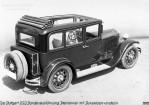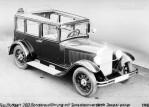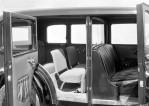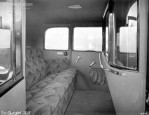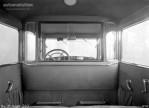Segment: Lower Premium
Production years: 1929, 1930, 1931, 1932, 1933, 1934
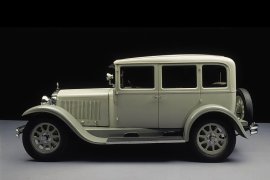 18 Photos
18 PhotosAfter Daimler-Motoren-Gesellschaft and Benz&Cie merged, the board had to decide if they should build luxury cars or just popular vehicles like everybody else.
Daimler noticed that there were just a few luxury German carmakers, especially the Maybach, and insisted on building vehicles for the upper segment, while Benz&Cie considered that there was no market for luxury vehicles. In the end, the two sides took a wise decision: on the same chassis, they built vehicles for the masses, the Typ 200, and for the upper segment as the Typ 260. It was like they did the base model and the full-option version long before other carmakers.
The closed version of the Typ 260 was built as a complete vehicle with the same distinct elements from Mercedes-Benz. It featured the flat vertical radiator with raised top and the three-pointed-star badge mounted on the radiator's cap. A straight bar supported the two electric headlamps placed between the front fenders. Soon the DMG proved that its decision was better, and the 200 model was dropped. The 260 version sales exceeded more than 50 percent of the 200 version.
But DMG didn't just place a bigger engine inside the car and sold it much more expensive. It finished the cabin with large, comfortable, leather upholstered seats and wood veneers on the door panels. Its dashboard, even though it was based on the same panel as the 200, featured better-looking finishes and materials.
Under the hood, the Typ 260 featured a 2.6-liter, inline-six engine, which ran smoother than the one fitted in the Typ 200. Even though it provided only two more ponies, it was much more appreciated by the customers.
MERCEDES BENZ Typ Stuttgart 260 (W11) 1929, 1930, 1931, 1932, 1933, 1934
- 2.6
MERCEDES BENZ Typ Stuttgart 260 (W11)
2.6
ENGINE SPECS - 2.6 | |
|---|---|
| Cylinders: | L6 |
| Displacement: | 2581 cm3 |
| Power: | 37 KW @ 3400 RPM 50 HP @ 3400 RPM 50 BHP @ 3400 RPM |
| Torque: | 100 lb-ft @ 1200 RPM 135 Nm @ 1200 RPM |
| Fuel System: | Carburetor |
| Fuel: | Gasoline |
PERFORMANCE SPECS | |
|---|---|
| Top Speed: | 56 mph (90 km/h) |
TRANSMISSION SPECS | |
|---|---|
| Drive Type: | Rear Wheel Drive |
| Gearbox: | Manual, 3 Speed |
BRAKES SPECS | |
|---|---|
| Front: | Drums |
| Rear: | Drums |
TIRES SPECS | |
|---|---|
| Tire Size: | 5.25-20 |
DIMENSIONS | |
|---|---|
| Length: | 172.4 in (4379 mm) |
| Width: | 66.1 in (1679 mm) |
| Height: | 70.9 in (1801 mm) |
| Front/rear Track: | 56.1/56.1 in (1,425/1,425 mm) |
| Wheelbase: | 110.6 in (2809 mm) |
WEIGHT SPECS | |
|---|---|
| Unladen Weight: | 2866 lbs (1300 kg) |
| Gross Weight Limit: | 4299 lbs (1950 kg) |
FUEL ECONOMY (NEDC) | |
|---|---|
| Combined: | 13.8 mpg US (17 L/100Km) |
| CO2 Emissions: | 406 g/km |







